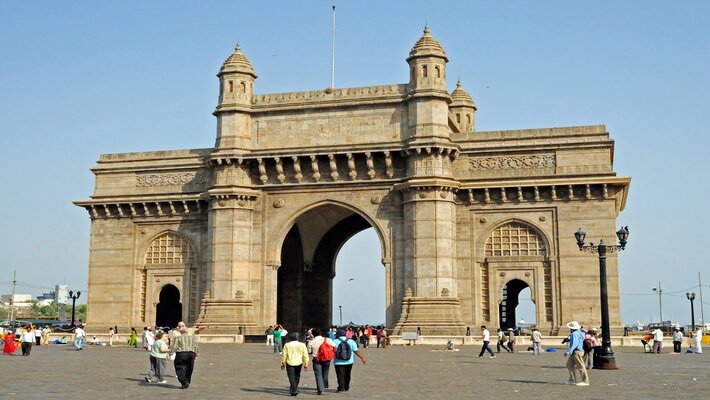
India is home to many magnificent architectural works, and almost all the monuments of India flaunt the skillsets and craftsmanship of our countrymen. Amongst the other tourist attractions, some of the architectural monuments made by British in India during the British Colonial era in India are exclusively beautiful. For almost two centuries starting from the mid-1700s to 1947, the British occupied and ruled India. During its reign in India, just like every other field, the Britishers left a profound influence on Indian architecture. These British architectural monuments have their own distinctiveness and they certainly play a much wholesome role in magnifying the beauty of India across the world map.
Victoria Memorial
A large marble building in Kolkata, West Bengal, India, Victoria Memorial was built between 1906 and 1921. Dedicated to the remembrance of Queen Victoria of Britain (1819–1901), the magnificent monument has now been converted to a museum and tourist destination. Lying by the bank of the Hooghly River, the Victoria Memorial’s foundation stone was set in 1906 and the building was inaugurated in 1921. While the construction work of the monument was originally completed by the Messrs. Martin & Co. of Calcutta, various additional construction was done post-independence. The memorial is surrounded by a glamorous garden covering an area of 64 acres (approx.).
Gateway of India
Regarded as an arch monument built during the 20th century, the Gateway of India was erected at Mumbai, India to honor the visit of King George V and Queen to India in 1911. Designed in Indo-Saracenic style, the construction of the monument started on 31st March 1911. After the ultimate design was finalized by George Wittet in 1914, the construction of the architectural monument was concluded in 1924. Later used as a symbolic ceremonial entrance to India for Viceroys and the new Governors of Bombay, the Gateway holds the significance of allowing the entry and access to India. Located on the waterfront at Apollo Bunder area in South Mumbai, Gateway of India overlooks the Arabian Sea and often referred as the Taj Mahal of Mumbai.
India Gate
Originally called as the All-India War Memorial, India gate is located across the Rajpath, on the eastern edge of New Delhi, India. The India Gate is built in the remembrance of more than 70,000 soldiers of the British Indian Army who sacrificed their lives during the First World War and the third Anglo-Afghan War. The gate is inscribed with the names of 13,300 servicemen along with the name of some soldiers and officers from the UK. Designed by Sir Edwin Lutyens, India Gate highlights the architectural elegance of the Arch of Constantine, and is often compared to the Arc de Triomphe in Paris, as well as the Gateway of India in Mumbai.
Parliament of India
The house of the Parliament of India, located in New Delhi was designed by the British architect Edwin Lutyens and Herbert Baker in 1912-1913. After the construction of the Parliament House, then called the Central Legislative Assembly, began in 1921 and ended in 1927, the grand opening ceremony of the monument was performed on 18 January 1927 by then Viceroy of India, Lord Irwin. With a circular shape based on the Ashoka Chakra, the building holds a central chamber along with semi-circular halls surrounded by large gardens and the perimeter is fenced off by sandstone railings.
Rashtrapati Bhawan
The presidential Residence of India, Rashtrapati Bhawan was previously known as the Viceroy’s House. After the capital of India was decided to be relocated from Calcutta to Delhi, the decision to build a residence in New Delhi for the British Viceroy was taken during the Delhi Durbar in December 1911 and Rashtrapati Bhawan was made. Located on the Rajpath of New Delhi, India, Rashtrapati Bhawan is the official home of the president of India. Along with the 340-room main building that has the president’s official residence, Rashtrapati Bhawan is known for its spacious and magnificent reception halls, guest rooms and offices.
With a complete 320 acre of Presidential Estate that furthermore comprises huge presidential gardens, also famously known as Mughal Gardens, the monumental building also hosts huge open spaces, quarters for bodyguards and staff, sheds, other offices as well as utilities within its perimeter. It is regarded as one of the largest homes allotted for a head of government in the world.







